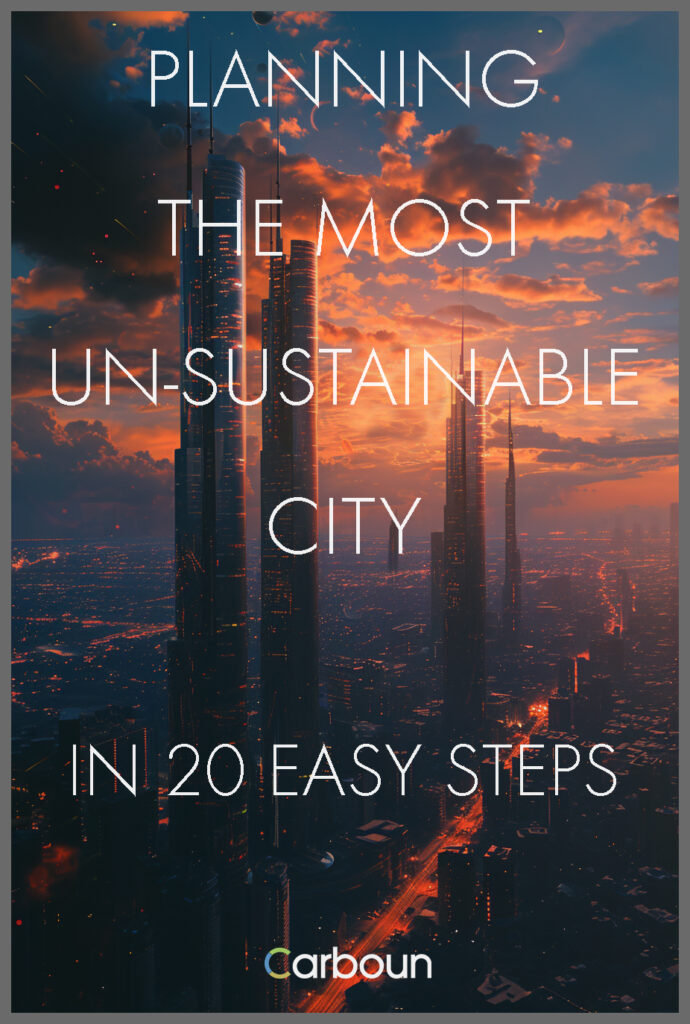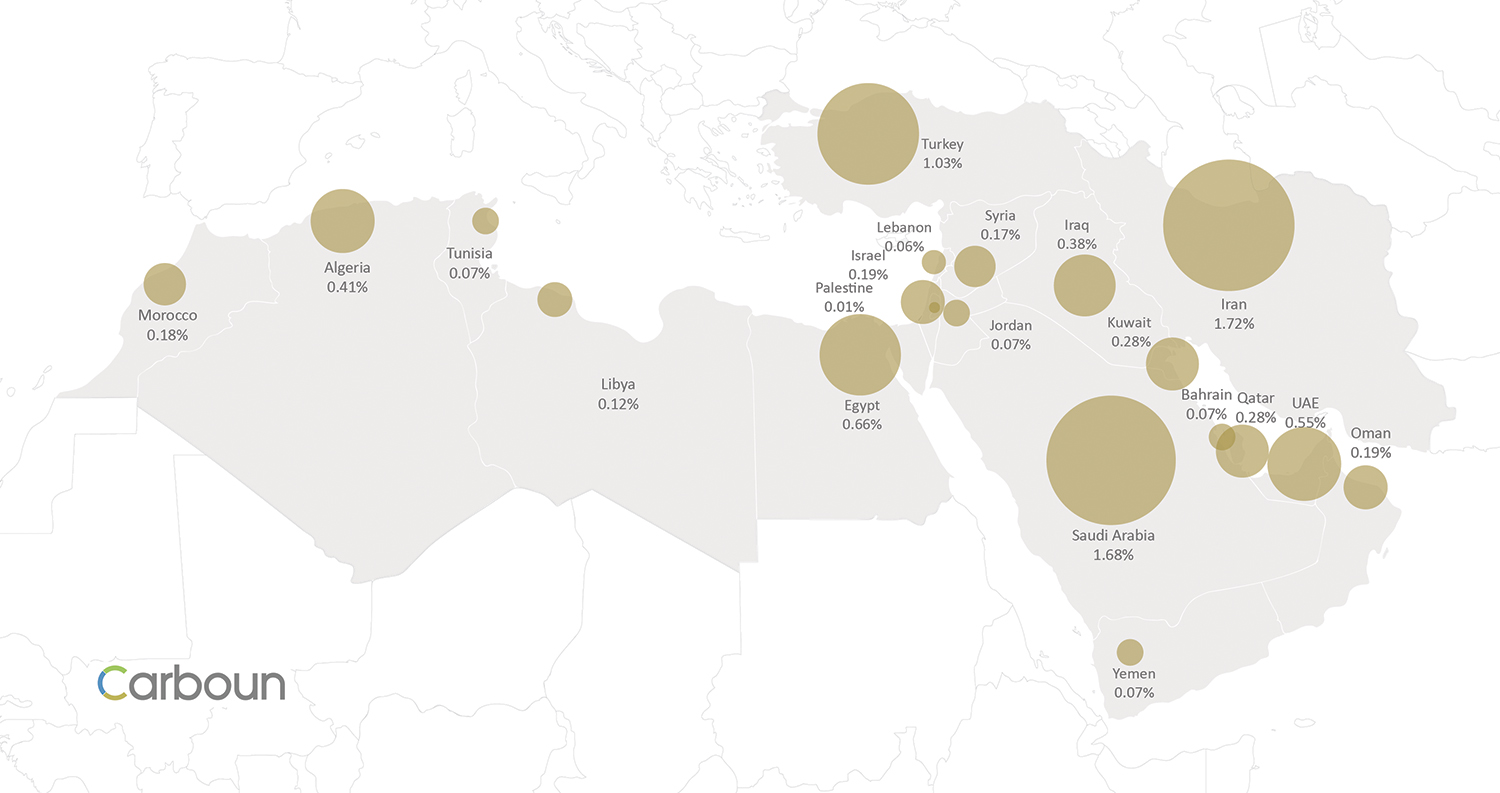
Have you always wanted to build an unsustainable city but didn’t know how?
We are proud to share with you Carboun’s free 20-step guide.
Continue reading Planning the Most Unsustainable City in 20 Easy Steps
|
||||
 Have you always wanted to build an unsustainable city but didn’t know how? We are proud to share with you Carboun’s free 20-step guide. Continue reading Planning the Most Unsustainable City in 20 Easy StepsKarim Elgendy
Karim Elgendy and Natasha Abaza Cities of the Middle East and North Africa (MENA) region share many characteristics that are not limited to their shared heritage, traditional urban form, or socioeconomic conditions. We argue that the cities of the MENA region share another characteristic; limited success in reaping the benefits of urbanization which has been taking place for over a decade, ultimately leading to unique growth in carbon emissions across multiple metrics Continue reading Urbanization in the MENA region: A Benefit or a Curse?Karim Elgendy Human settlements have traditionally needed an environmental rationale to exist where they do. They needed access to freshwater and to ecosystems that have enough biocapacity to produce biological materials to sustain their residents. Settlements also required a climate that was moderate enough – or can be economically moderated – to support human habitation. But for these settlements to become thriving cities, the prerequisites above were not enough. Successful cities depended to a large extent on their integration into an efficient trade network. One historic regional example of this is the rise and fall of the city of Ma’rib, which is today a settlement of less than 20,000 people just 75 miles east of the Yemeni capital Sana’a, but for almost a millennium, was one of the region’s greatest cities.
Continue reading Cities, Biocapacity, and Trade: The Case of Ma’rib Karim Elgendy Settling along the shores of the gulf In the barren deserts of the Arabian Peninsula, people have always settled in locations that provided freshwater and enough natural resources to enable trade and economic development. Human settlements in the southern shores of the Gulf, in what we now know as the United Arab Emirates (UAE), are no exceptions to this. For the last four centuries, the Bedouins of the Banu Yas tribes have settled a strip of land along the northern edge of the dune fields of the Arabian Peninsula’s Empty Quarter. Drawn to its plentiful ground water resources they established what is now known as the Liwa Oasis and developed date plantations which provided subsistence. But when fresh water was discovered on the Abu Dhabi Island in the late 18th century, Al Bu Falah branch of Banu Yas moved to the coastal location which – in addition to providing fresh water- also allowed them to develop pearling industry and trade. In the early 19th century, another branch of the Banu Yas, known as Al Bu Falasa, moved from the Abu Dhabi Island to settle near a natural creek 90 miles east of the Abu Dhabi Island. In addition to ground water and pearling, the creek – now known as the Dubai Creek- allowed the establishment of a port which facilitated trade with neighbors across the gulf and beyond. They quickly established a settlement on the western shore the creek – known later as Bur Dubai – but had to abandon it two decades later and move to the eastern shore after a smallpox outbreak. By the end of the 19th century, the combined advantages of fresh water availability, the natural port, the pearling industry, and the good geographic location, were sufficient for the new settlement to endure a sweeping fire that burnt through most of it dwellings. The Bedouins that have settled in Dubai sought no other location and simply rebuilt their settlement. Continue reading Policies to Buildings: The UAE’s Emergence as the GCC’s Sustainability Leader
 National share of 2014 global carbon emissions across the Middle East and North Africa region, including Turkey, Iran, and Israel. Copyrights: Carboun Karim Elgendy The two-week COP 21 climate conference in paris (also known as the 21st Conference of Parties to the United National Framework Convention for Climate Change ) ended on Saturday 12 December with an adopted agreement covering 195 countries, and providing a framework for voluntary efforts to significantly reduce carbon emissions starting 2020. |
||||